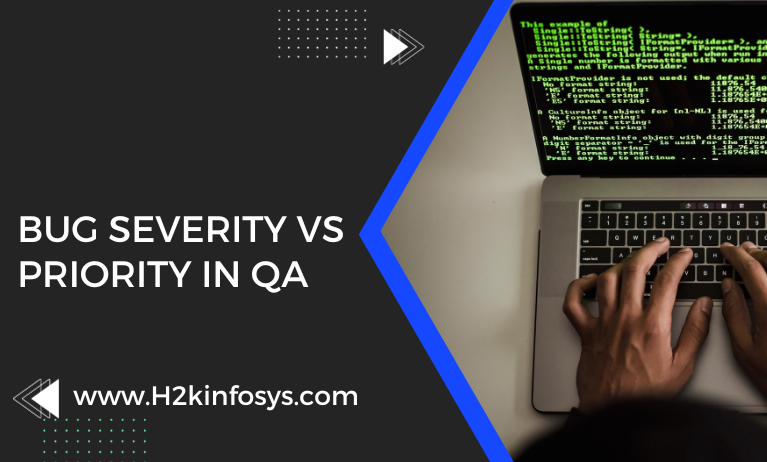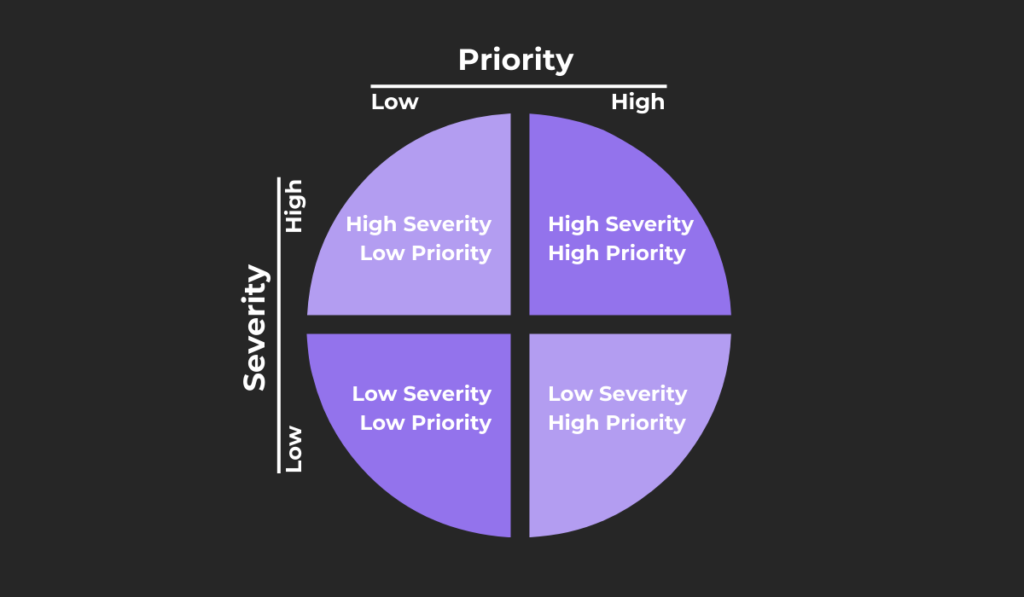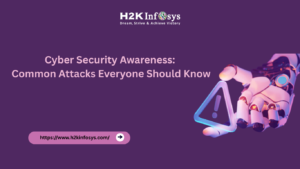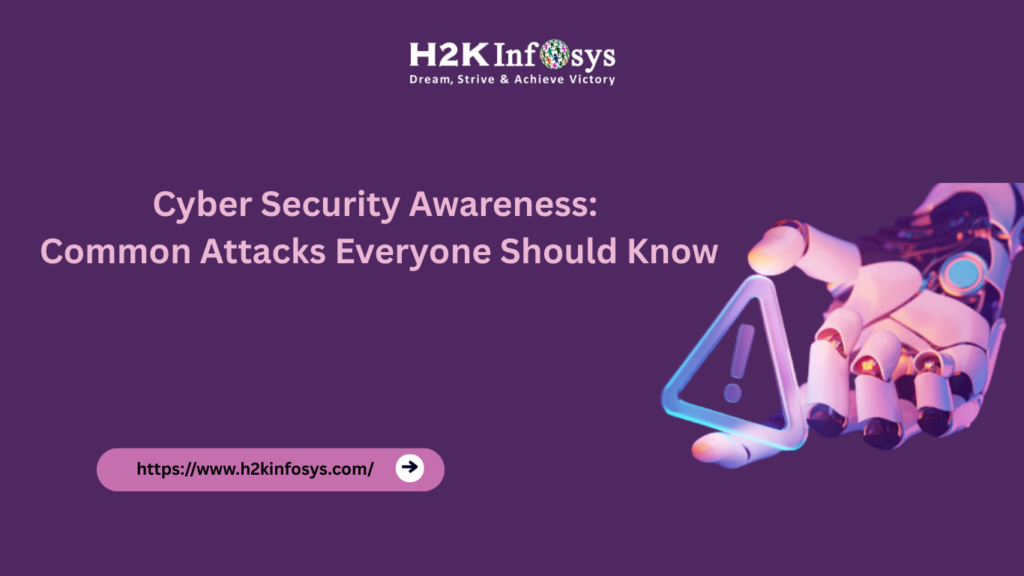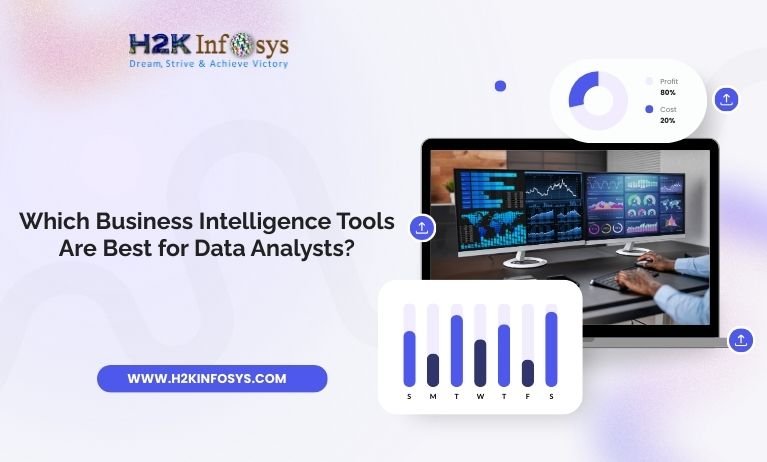Introduction
Bug priority and bug severity are two concepts that go hand in hand. Nevertheless, these are two distinct phrases that refer to slightly dissimilar aspects of a problem. For everyone involved with the development process, it is crucial to differentiate between severity and priority.
Finding the best response to the conflicting issue of “What to fix first?” that might arise between QA engineers, developers, and stakeholders is made simpler by having a clear grasp of the differences. This article should help to clarify things and provide the fundamentals. Check our Quality assurance software testing courses online to learn more.
What Is Bug Severity?
The degree to which a certain flaw affects the program that is being tested is known as bug severity. The severity level of a fault increases with how much of an impact it has on overall functionality or performance.
Bug severity is a measure of the impact a defect or bug has on the functionality, performance, or operation of a software application. It reflects the seriousness of the bug in terms of how much it disrupts the system or affects its usability. Severity is determined from a technical perspective, focusing on the bug’s consequences on the overall software functionality, rather than its urgency to fix.
Importance of Bug Severity in QA
Understanding bug severity is crucial for prioritizing tasks during the software development and testing lifecycle. It helps:
- Assess the potential risks associated with unresolved bugs.
- Determine the overall quality and stability of the application.
- Allocate resources effectively to address critical issues.
Characteristics of Bug Severity
- Impact-Oriented: Bug severity evaluates the depth of the issue’s impact on system functionality. For example, a bug causing a system crash would be more severe than a typo in the user interface.
- Objective Assessment: It requires a clear understanding of the software’s requirements and expected behavior to classify a bug accurately.
- Technically Focused: Severity considers technical details, such as how a defect affects modules, workflows, or the integration between components.
Factors Affecting Bug Severity
Several factors help determine the severity of a bug, including:
- Functionality Impact: The extent to which the defect hampers the core functionality of the software.
- Business Criticality: If the bug affects a business-critical feature or process, its severity is generally higher.
- System Stability: Issues that compromise the system’s stability, such as crashes or deadlocks, are considered more severe.
- Data Integrity: Bugs leading to data corruption or loss are often classified as high severity.
Real-World Example of Bug Severity
Imagine an e-commerce application:
- A bug that causes payment processing to fail is highly severe because it directly affects the core function of the platform.
- On the other hand, a minor alignment issue on the homepage banner has negligible severity as it doesn’t affect the core functionality.
Understanding bug severity allows QA teams to categorize and address issues effectively, ensuring the software’s reliability and performance.
Levels Of Bug Severity
Blocker (S1): It is difficult to continue using or testing the Software training and placement with such a mistake. For example, it terminates an application.
Critical (S2): It is an improper operation of a certain feature or functionality of business-critical software, such as a failed installation or failure of one of its primary features.
Major (S3): Although an error has a big impact on a program, other inputs and system components still work, so you can still utilise it.
Minor (S4): A flaw confuses users or results in unwanted behaviour, but it has little impact on their experience. There are many UI issues here.
Low/Trivial (S5): Functionality is unaffected if a defect is not readily apparent. It can be an issue with unofficial apps, poor grammar or spelling, etc.
What Is Bug Priority?
The sequence in which the faults will be repaired is determined by bug priority. The more urgent the issue, the faster a development team will investigate it. The severity of an issue is frequently used to decide its priority. It makes sense to start resolving blockages rather than little flaws.
Bug priority refers to the level of urgency with which a software defect should be fixed. It is determined by the stakeholders, including project managers, product owners, and business teams, and focuses on the business impact of fixing or not fixing the issue. Priority is a relative measure and helps guide developers in deciding which bugs should be addressed first, based on factors such as user experience, deadlines, and customer impact.
Unlike bug severity, which is a technical assessment of the bug’s impact on the system’s functionality, bug priority is more subjective and is based on how quickly a defect needs to be resolved to meet business goals or user needs. Priority decisions often depend on release timelines, the importance of the feature where the bug occurred, and whether it affects a particular user group or function.
Key Factors Influencing Bug Priority
Several factors help determine the priority of a bug:
- Business Impact: The priority of a bug depends largely on how much it affects the business or the product’s core features. For instance, bugs in a feature that directly impacts revenue (like payment processing) will have a higher priority than issues with non-essential features (like a cosmetic display issue).
- User Experience (UX): Bugs that degrade the user experience, such as navigation problems or slow load times, can negatively affect user satisfaction. These issues are often given higher priority, especially if they prevent users from completing important tasks or transactions.
- Customer/End-User Impact: A bug that affects a large group of users, especially customers, will generally have a higher priority. For example, if a bug prevents a significant portion of the user base from accessing a key feature, fixing it will become a higher priority to minimize customer dissatisfaction.
- Release Deadlines: In projects with strict deadlines or fixed release dates, certain bugs must be prioritized to ensure that the product can be shipped on time. Bugs that prevent a product from being shipped or make it unusable in the release candidate are typically given the highest priority.
- Feature Criticality: If a bug occurs in a critical part of the application or a highly anticipated feature, fixing it may be more urgent. For example, a bug in a new feature that was promoted as a key differentiator could delay the product release if not fixed in time.
- Regulatory and Compliance Issues: Bugs related to legal compliance, privacy, or security regulations can often be given a higher priority, especially if the product is being developed for regulated industries like healthcare, finance, or education. Failing to resolve these issues could lead to legal consequences.
Bug Priority vs. Bug Severity
While bug severity measures the technical impact of a defect on system functionality, bug priority focuses on the urgency of resolving the defect. A high-severity bug doesn’t always mean it has high priority. For example, a critical bug that causes a system crash may be highly severe but might not need to be fixed immediately if it only happens in very specific scenarios or test environments.
On the other hand, a low-severity bug like a minor UI glitch might be assigned high priority if it impacts an important customer-facing feature or upcoming product launch.
Types of Bug Priority Levels
- P1 (High Priority): These are critical bugs that must be addressed immediately. They prevent core features from functioning or have a significant impact on users. If left unresolved, they can severely affect the business and product launch.
- P2 (Medium Priority): These bugs are important but not urgent. They should be fixed in the near future, as they might impact usability or cause inconvenience for users. However, they don’t affect critical features or processes.
- P3 (Low Priority): These bugs are minor and have little to no impact on the overall user experience or product functionality. They are usually cosmetic or related to non-critical features and can be addressed after more severe and higher-priority bugs.
- P4 (Lowest Priority): These issues are non-urgent and typically don’t need to be fixed unless there is available time or resources. They might involve very minor cosmetic changes or scenarios where the bug is rare and doesn’t affect the majority of users.
Levels of Bug Priority
High (P1): The issue needs to be fixed as soon as possible because it is crucial to the product.
Medium (P2): The issue can be repaired in the regular course of business, such as the following sprint, and does not require an immediate response.
Low (P3): Since the flaw isn’t serious, it can either be rectified once the more important flaws are addressed or left alone.
Based on these, we can also classify fixes per their timing:
1.Hotfix.
It is critical to address defects as soon as possible if they have a significant influence on user and business performance. For instance, a team should address problems right away if an installation fails or a user is unable to register or sign in.
2.Upcoming release.
A team does not have to use a hotfix if errors are bothersome but do not impact fundamental functioning. For instance, while a faulty layout is perplexing, it doesn’t affect functionality. It is OK to include this repair in a list of tasks for the upcoming version.
3.Later Sprints
The defects are added to a queue and fixed at some point in the next sprint if the issues are not urgent and there is no demand from the user or business side. It is a common scenario of dealing with typos and minor compatibility issues.
Do We Need Both Severity and Priority?
In essence, a defect’s level of criticality is described by both its severity and its priority. It would seem that the severity should have no bearing on the priority. It makes sense to prioritise repairing problems in accordance with their criticality. It is, however, more difficult.
The severity of a flaw represents how it might affect a user. As a result, a QA team rates the seriousness of each problem. Since QA experts examine a system to judge it from a user’s perspective, they may determine how seriously it is flawed. The sequence in which developers will repair defects is determined by priority. The decision to complete this order rests on the person in authority, such as the Product Owner, Project Manager, Business Analyst, etc.
Although it isn’t usually the defining factor, defect severity is one of the criteria used to determine the priority. Stakeholders consider the big picture while choosing the priority. They must always take business considerations into account. Therefore, priority and severity are both necessary. These two criteria aren’t necessarily dependent on one another while being closely related. Priority is not always determined by severity. As a result, several teams of experts who work on software development typically utilise these words.
Conclusion
Different teams use severity and priority as operating factors. The severity of a fault is one of the most important considerations, though. The person who must weigh the two options and decide is the project manager. Remembering the distinction between bug severity and priority is your best bet. Check out the Quality assurance training and placement to learn more.
